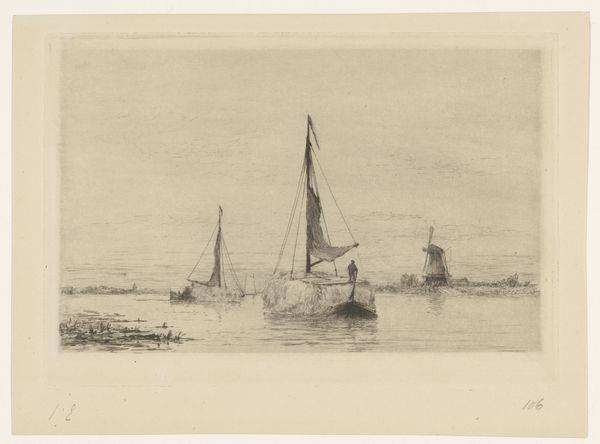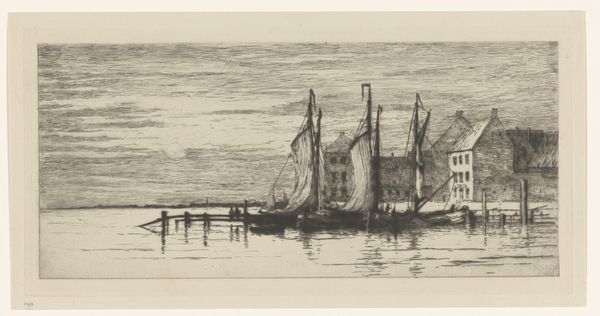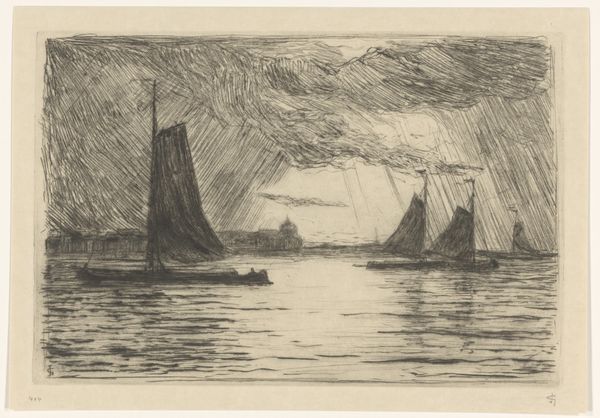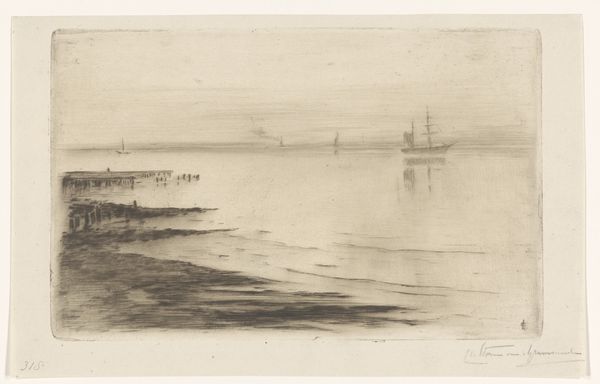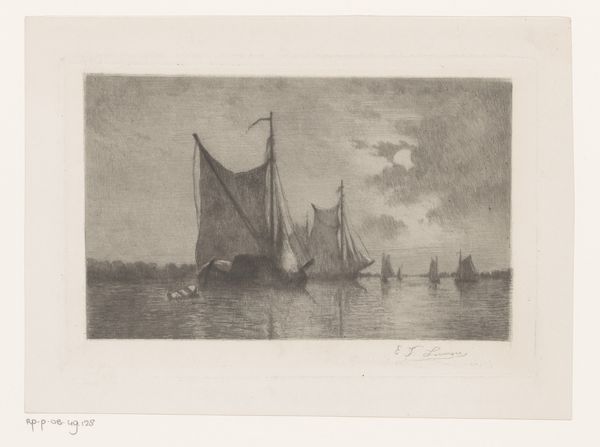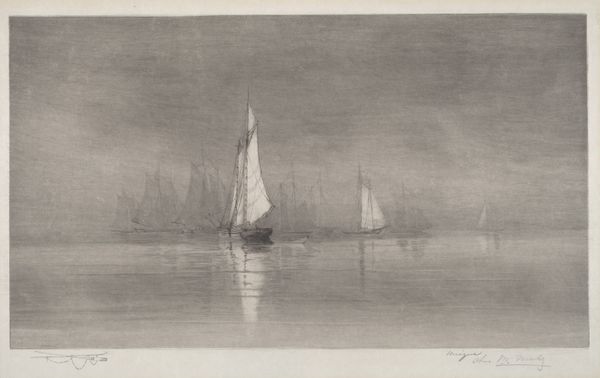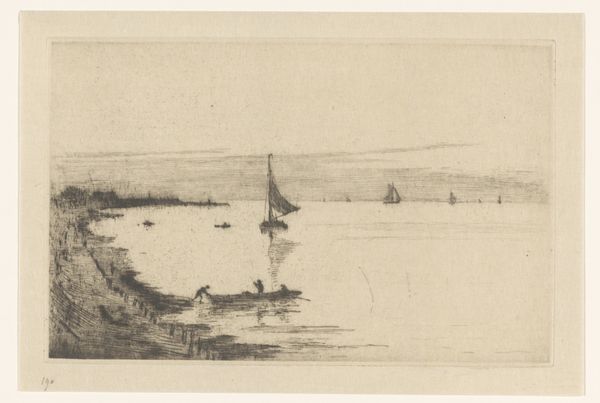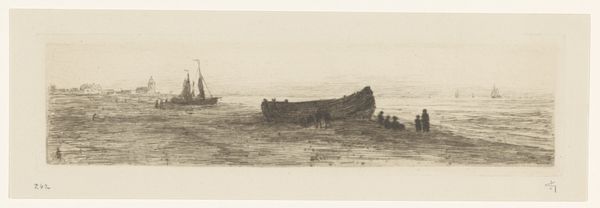
print, etching
# print
#
impressionism
#
etching
#
landscape
#
river
Dimensions: height 150 mm, width 280 mm
Copyright: Rijks Museum: Open Domain
Editor: So, here we have Carel Nicolaas Storm van 's-Gravesande's "Maas bij Dordrecht," created between 1880 and 1884. It’s an etching, and I immediately notice the stillness of the water, creating near-perfect reflections. It's quite muted in tone. What stands out to you, focusing on the purely visual aspects? Curator: Immediately, the composition's equilibrium is striking. Observe how the horizontal emphasis of the water and distant landmass are punctuated by the verticality of the sailing vessels. These forms create a rhythmic visual counterpoint. Editor: The way the artist uses light and shadow also strikes me. It is creating depth with so few gray tones, from nearly white paper to almost-black shadows. Can we attribute any meaning to this use of tone? Curator: The tonality establishes a mood, certainly, but from a formalist perspective, consider how it contributes to spatial articulation. Note how the graduated values describe the recession of space and delineate form. How does the artist's choice of etching, specifically, affect this? Editor: Because it's an etching, the lines are crisp but delicate. Maybe the printmaking aspect encourages a study in contrasts? Curator: Precisely. The controlled precision of the etching technique lends itself to the study of tonal relationships and formal arrangement. It compels a concentrated viewing experience. Do you see this control anywhere in particular? Editor: Yes, the tiny details in the boats and the rigging—it all adds to the impression of intentional composition. Curator: It reveals a structured and systematic application of form to achieve aesthetic harmony. Through line, tone, and arrangement, the artist composes more than a landscape. It offers a masterclass in pure aesthetics. Editor: I'll definitely be more aware of the interplay between technique and the final composition of an image in the future! Thanks for sharing a great perspective.
Comments
No comments
Be the first to comment and join the conversation on the ultimate creative platform.
